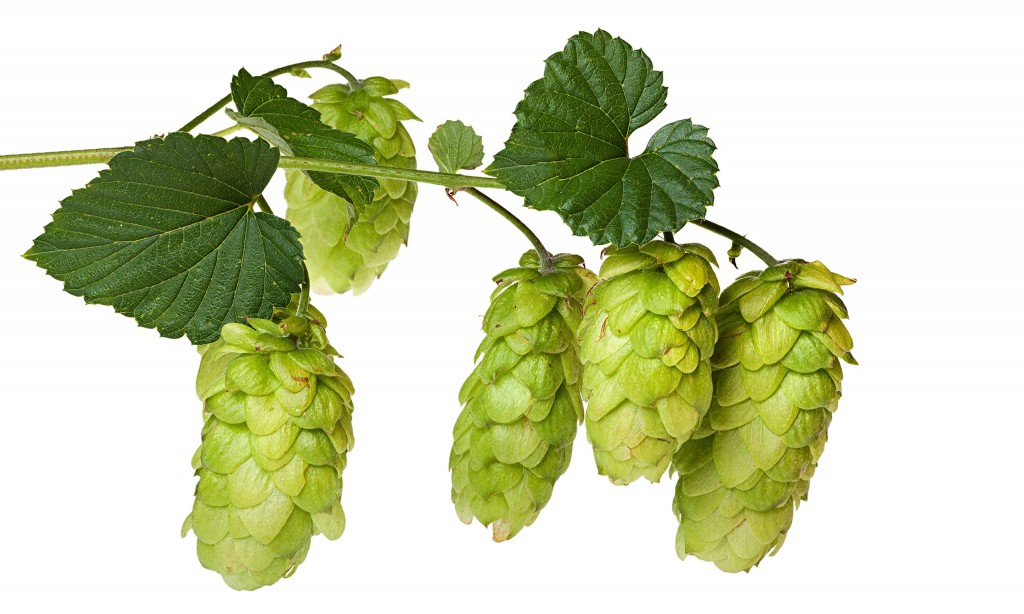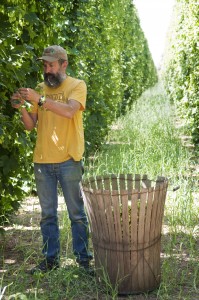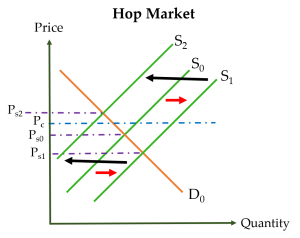Depending on your beer knowledge, you may be wondering, what are hops?

Hops are one of the three main ingredients for beer, along with barley and water. In the United States, they are primarily grown in Oregon, Idaho, and Washington. My family actually grows hops, among other things, and I decided to write this post after my mom mentioned an article she read. (Thanks Mom)
The article covered some troubling trends in the hops market, most likely stemming from a boom in craft breweries over the last 5 years. In fact, we have seen about a 116% increase in the total number of craft breweries, which accounts for microbreweries, brewpubs, and regional craft breweries. This increase in demand has led to: an increased price for hops, and a 72% increase in US hop acreage. This acreage increase was also accompanied by changes in the varieties of hops planted, shifting from a 50-50 split between alpha hops and aroma/dual purpose hops. Basically, alpha hops are varieties which have high alpha acid levels(10%), which contribute mostly to preservation in beer, rather than taste. Generally, smaller brewers prefer aroma/dual purpose varieties because of their lower alpha acid content, which can lead to better flavor and aroma in the beer.
Some additional characteristics of the hop market are important. One, many farmers will grow their hops on contract for either a brewer or a hop broker. This helps protect the farmer from the risk associated with growing varieties which may not be desirable at harvest time in August. Two, hops last for a long time when dried and stored properly, so farmers, brewers, and brokers can store some of their harvest for extended periods of time.

In order to avoid many of the cyclical problems of the hop market in the past, many brewers are contracting more and more of their hops. In the past, industry practice was to contract for about 75% of your hops, then buy the last 25% on the spot market, where hops go after contracts have been fulfilled. Now, some brewers have increased their contracting to almost 100%. This increase in contracting has allowed farmers to more confidently expand their acreage and all of the infrastructure like hop pickers and hop dryers that go along with it.
As these increases have occurred, we have seen a corresponding increase in hop stocks, or the amount of hops available in total between contracts and the spot market. In fact, the National Agricultural Statistics Service (NASS) March report indicated that stocks have increased by 9% from last year. NASS also reports on who is holding those stocks, between growers, merchants, and brewers. One trend which has worried some hop enthusiasts is the increase in stocks held by merchants and growers compared to brewers. From 2016 to 2017, the percentage of stocks held by brewers has decreased from 31.25% to 25%, and increased for growers and merchants from 68.75% to 75%.

Since we have seen such an increase in hop stocks and new acreage, many hop buyers are expecting cheaper prices as supply increases(S1). This may lead some brewers to avoid contracting,(Pc) and turn to the spot market (Ps1). In doing so, they make it more difficult for growers to predict which hop varieties should be grown, so growers will tend to plant less and remove some of their old fields(S2). This would lead to a decrease in the overall supply, and raise prices again(Ps2), which could lead to hop shortages. Hop contracts are generally regarded as a solution for decreasing the chronic instability in the market, but it remains to be seen if brewers can tame their desire for deals and stay out of the spot market. Only time will tell if the new wave of craft brewers are different than those who have encouraged instability in the past.
Lastly, I will leave you with a Czech proverb:
“A fine beer may be judged with only one sip, but it is better to be thoroughly sure.”
-Max Coleman, 7th generation hop farmer
